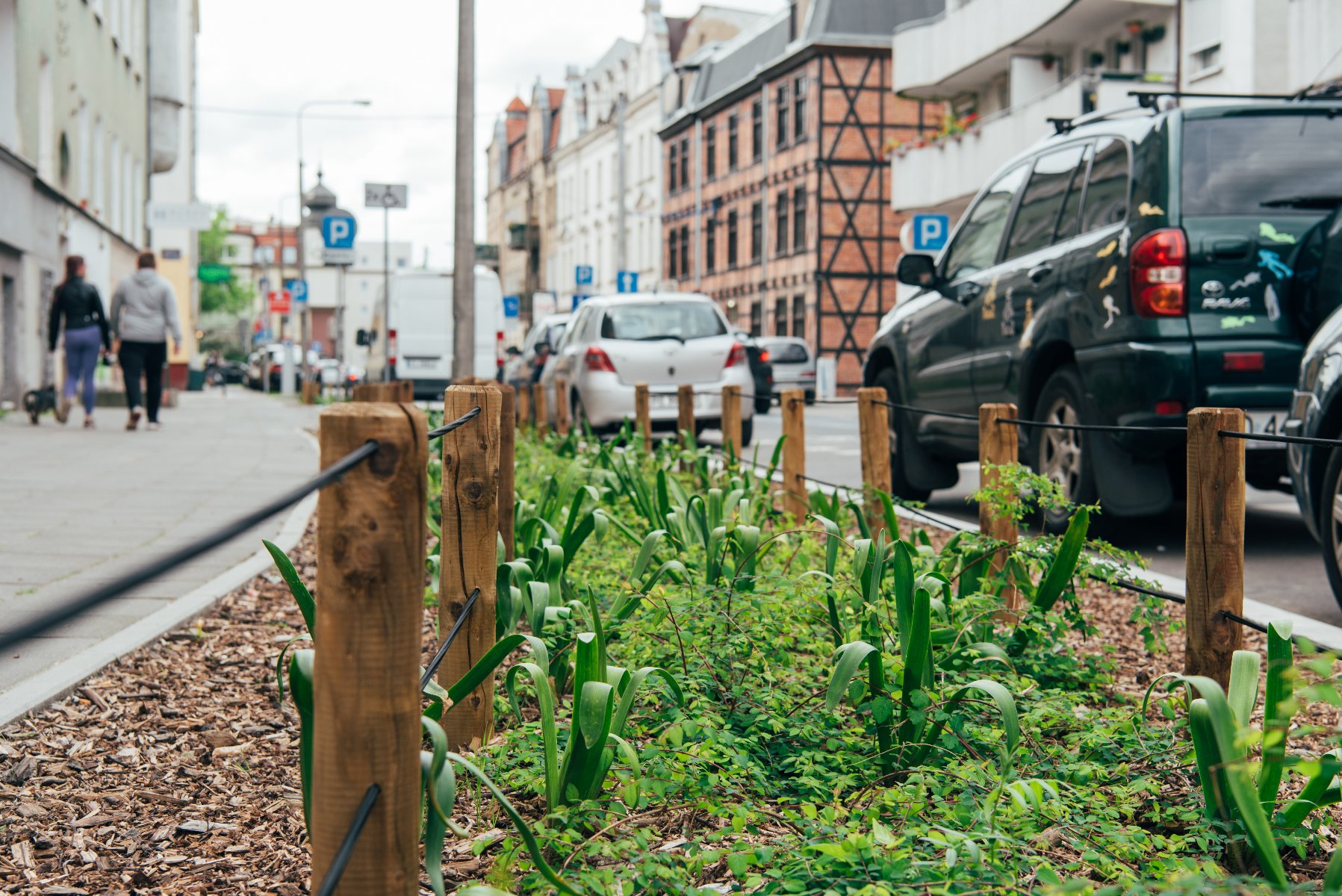Greenery instead of paving

Currently, there are about 120 thousand trees in the city's roadways. To this must be added over 180 thousand square meters of low greenery.
- Every year the Municipal Roads Management (ZDM) prepares projects of new planting. There is more greenery as part of road investments, e.g. reconstruction of Jackowskiego, Taczaka, Rybaki, Kwiatowa or Palacza streets, but also thanks to spot repairs of hardened surfaces of existing streets. Such activities are particularly valuable and noticeable in the city center, where dense buildings and underground utilities do not leave much space for greenery - emphasizes Mariusz Wiśniewski, Deputy Mayor.
This year alone, in places where there was previously concrete, Municipal Road Administration is planning to plant 68 trees, over 3,600 shrubs and 15.5 thousand bulbous plants. Last year it was 144 trees, almost 10 300 shrubs and almost 8 thousand bulbs. Such work has been carried out for years, but recently it has been intensified.
- New vegetation is planted in areas not used by pedestrians, drivers or cyclists. These are often wide sidewalks, once blocked by cars. Some of them can be designated for tree plantings or low greenery. Such unpaving has taken place in Wojskowa, Grobla, Królowej Jadwigi, Poznańska, Jeżycka, Dąbrowskiego (on the section from Żeromskiego to Botaniczna streets), Karmelicka, Mostowa, 3 Maja or Chwaliszewo streets, explains Piotr Libicki, the deputy director of Municipal Road Administration.
In recent months, there has also been more greenery in Wilda and Łazarz due to the introduction of the Paid Parking Zone (SPP). The new traffic organization has shifted car parking onto the roadways in many places. This made it possible to plant greenery, using previously inaccessible spaces in the streets: Niegolewskich, Biała, Niecała, Stablewskiego, Jarochowskiego, Małecki and Sikorskiego. Over 3100 square meters of hardened surface was paved, 31 trees and over 4300 bushes were planted.
This year we plan to green Umińskiego, Limanowskiego, Załęże, Małeckiego (on the section from Gąsiorowskie to Strusia) and Mickiewicza streets. In the following years the planting will be continued on streets included in the SPP, e.g. Karwowskiego street in Łazarz.
These are not the only steps taken by the City. In the near future, an inventory of the city centre will be carried out - in the areas subject to revitalization that have the potential to create green enclaves there. Identification of such places will allow us to analyze the possibility of "de-paving" them and introducing vegetation instead. Such landscaping will help increase the biologically active area in the inner city of Poznan, i.e. in the most built-up areas. This in turn contributes to increased water retention and mitigates the effects of the urban heat island.
Unfortunately, such measures are not possible in all places in Poznan. There are areas where the location of greenery, especially planting trees, is hindered by the course of underground utilities and parking spaces.
Reconstruction of Wierzbięcice Street
Such situation we have to deal with e.g. in Wierzbięcice Street. According to the assumptions, the track in this place was separated and will be overgrown with grass. At the design stage (i.e. in 2017), the residents asked for the introduction of as many parking spaces as possible in this place. Their demands were heard. This resulted in not much free space left for greenery. Limitations with its planting are also due to the width of sidewalks and the need to ensure accessibility for people with disabilities. Additionally, the location of vegetation in this place is influenced by the course of underground utility networks and traction poles. The network operators introduce protective strips for their infrastructure, which limits the space for planting trees.
- However, taking into consideration changing conditions and social expectations regarding the function of the space, the City will analyze the situation on Wierzbięcice Street with respect to introducing additional low greenery and trees. Where it can be done, new greenery could take over the parking spaces located in the road strip. Such solutions are possible thanks to the extension of the paid parking zone in Wilda, explains Piotr Libicki, the deputy director of Municipal Road Administration.
ZDM/ AJ/ OD
See more

Grow in Poznan - an international conference full of inspiration

Networking Workshop at Grow in Poznań - International Conference Supporting Entrepreneurship and...

Grow in Poznan - International Conference Supporting Entrepreneurship and Professional Skills Development


